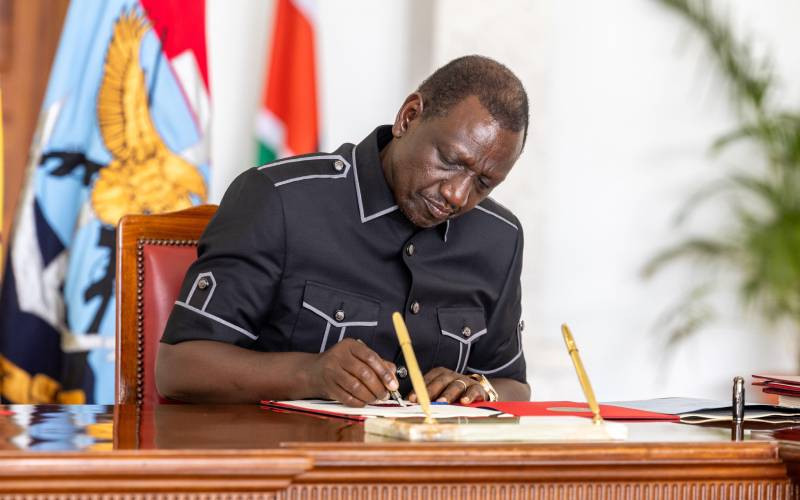When Kenya-born British singer and song-writer Roger Whittaker sang “Make Way For Man” in the album My Land Is Kenya (A Musical Safari) in 1984, poaching of wildlife was at an all-time high. Little did Whittaker know how true his melody rang as time has proved him right: Mankind is the greatest enemy of our wildlife heritage. Period.
The latest worldwide report shows that one African elephant is killed every 15 minutes, sacrificed at the altar of an increasingly sophisticated, ruthless and illegal trade in ivory. In June, a 45-year-old elephant named Satao, who was one of Africa’s last ‘great tusker’ elephants was killed by poachers. The danger of poaching couldn’t have sunk an lower than this.
Indeed, more than 30,000 of the estimated total African elephant population of 500,000 are being felled for their tusks that attract $400,000 per pair for an adult male. Poaching has also been infiltrated by criminal gangs and terrorist groups such as the Al Shabaab who use its proceeds to fund their activities.
Ivory is a prized possession for many buyers across Asia who use it to make chopsticks, amulets, figurines and trinkets. Others grind it to develop a “magical” elixir that they say enhances their youth. The rhino horn is ground and sold ostensibly as an aphrodisiac and talisman. Crocodile and snakeskin are much sought-after for making shoes, handbags and dubious healing properties.
The World Wildlife Fund reports that absolute numbers of wildlife has halved since 1970 — within a mere 40 years. Wildlife numbers are declining at a faster rate than at any other time in human history, with the greatest markets being in the US and China.
Last week, animal lovers across 130 cities worldwide, marched in solidarity to create awareness about the preservation and conservation of animals and their habitats. Kenyans turned up in their thousands
In Kenya, safari tourism revenues remain high despite the dwindling number of tourist arrivals due to terrorism and global recession.
A 2014 report by WWF “breaks wildlife populations down into three major categories: Terrestrial, freshwater and marine. Terrestrial populations — like elephants, tigers, lions and rhinos — reported a 39 per cent decline, as did marine animals. Freshwater animals — like frogs, salamanders, shorebirds and non-marine aquatic life — were hardest hit, with a population decline of 76 per cent.”
“Tropical regions have seen the biggest wildlife declines geographically, especially in the Southern Hemisphere...Collectively, threats spurred by human development — including exploitation, habitat degradation, habitat loss, climate change and pollution — account for 93 per cent of primary threats to wildlife,” to quote the WWF report.
Countries like Kenya are tackling poaching by better arming rangers, using of drones and other appropriate technology and integrating conservation efforts by engaging local communities. There are also collaborations with conservancies, friendly nations through donations of equipment and sharing intelligence on criminal cartels involved in the bloody trade.
That is why Kenya celebrates World Elephant Day annually, acknowledging full well the right of these beautiful beasts to co-exist with us rather than face extinction. While the interventions mentioned above are critical in dealing with poaching, a lot more needs to be done. We must, for example, put in place higher penalties for poaching.
International collaborations must be encouraged to tackle trade in wild animal products. Foreign markets for wild animal products must be destroyed. Local authorities must engage foreign governments in coming up with an international policy against wildlife trafficking and poaching. Animals have a right to live peacefully without the interference of man.
We are merely privilleged custodians of this heritage for future generations.
Stay informed. Subscribe to our newsletter
 The Standard Group Plc is a
multi-media organization with investments in media platforms spanning newspaper
print operations, television, radio broadcasting, digital and online services. The
Standard Group is recognized as a leading multi-media house in Kenya with a key
influence in matters of national and international interest.
The Standard Group Plc is a
multi-media organization with investments in media platforms spanning newspaper
print operations, television, radio broadcasting, digital and online services. The
Standard Group is recognized as a leading multi-media house in Kenya with a key
influence in matters of national and international interest.
 The Standard Group Plc is a
multi-media organization with investments in media platforms spanning newspaper
print operations, television, radio broadcasting, digital and online services. The
Standard Group is recognized as a leading multi-media house in Kenya with a key
influence in matters of national and international interest.
The Standard Group Plc is a
multi-media organization with investments in media platforms spanning newspaper
print operations, television, radio broadcasting, digital and online services. The
Standard Group is recognized as a leading multi-media house in Kenya with a key
influence in matters of national and international interest.







